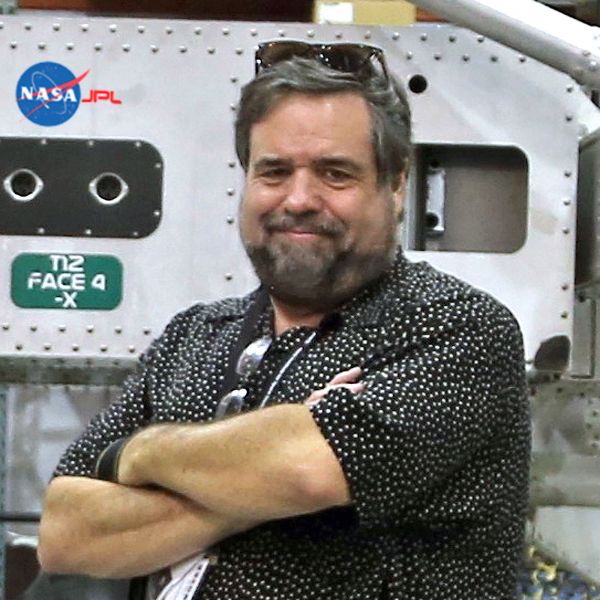This Week In Space podcast: Episode 95 — Clean Energy From Space
On Episode 95 of This Week In Space, Tariq and Rod discuss the future of space-based solar power with John Mankins.
Climate change has become a top priority for all of us, including NASA. Space solar power — beaming energy from space 24 hours per day — has become a real possibility and is being studied internationally by the US, Europe, Japan, and China. It promises to provide a zero-emissions, zero-carbon source of energy worldwide — but it will take significant investment, development, and commitment.
A recent NASA-backed study was positive but careful with its conclusions, and John Mankins, one of the first researchers of SSP in the US who continues to work on the concept, joins us to address the report and to talk about the possible future of limitless, clean, and affordable energy for a hungry world.
We'll dive into this and more on this episode of This Week in Space!
Download or subscribe to this show at: https://twit.tv/shows/this-week-in-space.
Get episodes ad-free with Club TWiT at https://twit.tv/clubtwit
Space news of the week
- NASA's Mars helicopter Ingenuity has flown its last flight after suffering rotor damage
- 'We proved that you can land wherever you want.' Japan's SLIM moon probe nailed precise lunar landing, JAXA says
- Hubble telescope spots water around tiny hot and steamy exoplanet in 'exciting discovery'
- New Study Updates NASA on Space-Based Solar Power
Model Falcon 9!

Looking for a telescope to see planets and comets? We recommend the Celestron Astro Fi 102 as the top pick in our best beginner's telescope guide.
Finally, did you know you can launch your own SpaceX rocket? Model rocket maker Estes' stunning scale model of a Falcon 9 rocket that you can pick up now. The launchable model is a detailed recreation of the Falcon 9 and retails for $149.99. You can save 10% by using the code IN-COLLECTSPACE at checkout, courtesy of our partners collectSPACE.com.
About This Week In Space
This Week in Space covers the new space age. Every Friday we take a deep dive into a fascinating topic. What's happening with the new race to the moon and other planets? When will SpaceX really send people to Mars?
Join Rod Pyle and Tariq Malik from Space.com as they tackle those questions and more each week on Friday afternoons. You can subscribe today on your favorite podcatcher.
Breaking space news, the latest updates on rocket launches, skywatching events and more!

Rod Pyle is an author, journalist, television producer and Editor-in-Chief of Ad Astra magazine. He has written 18 books on space history, exploration, and development, including Space 2.0, Innovation the NASA Way, Interplanetary Robots, Blueprint for a Battlestar, Amazing Stories of the Space Age, First On the Moon, and Destination Mars
In a previous life, Rod produced numerous documentaries and short films for The History Channel, Discovery Communications, and Disney. He also worked in visual effects on Star Trek: Deep Space Nine and the Battlestar Galactica reboot, as well as various sci-fi TV pilots. His most recent TV credit was with the NatGeo documentary on Tom Wolfe's iconic book The Right Stuff.

Responsible for Space.com's editorial vision, Tariq Malik has been the Editor-in-Chief of Space.com since 2019 and has covered space news and science for 18 years. He joined the Space.com team in 2001, first as an intern and soon after as a full-time spaceflight reporter covering human spaceflight, exploration, astronomy and the night sky. He became Space.com's managing editor in 2009. As on-air talent has presented space stories on CNN, Fox News, NPR and others.
Tariq is an Eagle Scout (yes, he earned the Space Exploration merit badge), a Space Camp veteran (4 times as a kid, once as an adult), and has taken the ultimate "vomit comet" ride while reporting on zero-gravity fires. Before joining Space.com, he served as a staff reporter for The Los Angeles Times covering city and education beats. He has journalism degrees from the University of Southern California and New York University.

Space.com is the premier source of space exploration, innovation and astronomy news, chronicling (and celebrating) humanity's ongoing expansion across the final frontier. Originally founded in 1999, Space.com is, and always has been, the passion of writers and editors who are space fans and also trained journalists. Our current news team consists of Editor-in-Chief Tariq Malik; Editor Hanneke Weitering, Senior Space Writer Mike Wall; Senior Writer Meghan Bartels; Senior Writer Chelsea Gohd, Senior Writer Tereza Pultarova and Staff Writer Alexander Cox, focusing on e-commerce. Senior Producer Steve Spaleta oversees our space videos, with Diana Whitcroft as our Social Media Editor.
